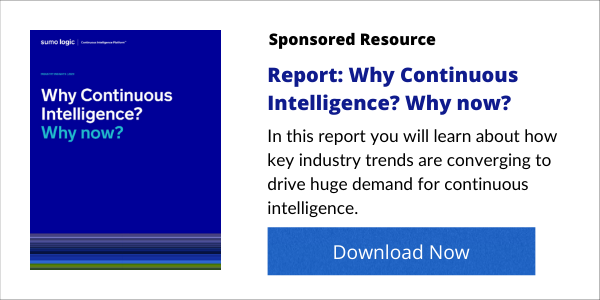
Edge, like many other complex applications and systems, needs more than traditional monitoring and performance management tools.
Edge deployments and applications are on the rise. From an operational perspective, edge applications have some of the most stringent availability and performance requirements. Yet, the blending of many elements that go into end-to-end solutions makes them incredibly complex. Traditional management solutions fall short. What’s needed is something that goes beyond traditional management solutions that simply monitors aspects of an edge application. Increasingly, the best fit is an observability solution that uses AI and continuous intelligence to deliver performance insights in real time.

To put the management burden issue into perspective, one need only look at the expected adoption of edge in the coming years. Worldwide spending on edge computing is expected to be $176 billion this year, an increase of 14.8% over 2021. Enterprise and service provider spending on hardware, software, and services for edge solutions is forecast to sustain this pace of growth through 2025 when spending will reach nearly $274 billion, according to the International Data Corporation (IDC) Worldwide Edge Spending Guide.
“Edge computing continues to gain momentum as digital-first organizations seek to innovate outside of the data center,” said Dave McCarthy, research vice president, Cloud and Edge Infrastructure Services at IDC. “The diverse needs of edge deployments have created a tremendous market opportunity for technology suppliers as they bring new solutions to market, increasingly through partnerships and alliances.”
And therein lies the reason more sophisticated management capabilities are needed to keep pace with edge’s growth.
See Also: Continuous Intelligence Insights
First, the companies that are embracing edge tend to be digital-first. As such, customer and user expectations are high. All edge applications and systems must be highly available and very responsive. Any outages or instances of poor performance will lead to problems. In many cases, poorly performing systems will lead customers to take their business elsewhere, publicize their problems on social media, or both. In some cases, safety issues may arise, such as with edge applications for autonomous systems. A fraction of a second delay in an image analysis application in a moving car could have dire consequences.
A second point to consider in that statement is that many edge solutions are the product of partnerships. There is no such thing as a one vendor, end-to-end solution. That means various elements or components (be it the hardware, software, communications systems, interconnectivity solutions, analysis routines, and more) that comprise a complete edge solution will have multiple management elements. Each will generate its own alarms, alerts, traces, logs, and telemetry data.
Aggregating and assimilating that vast amount of disparate data is beyond the scope of traditional management solutions. Humans managing operations would be overwhelmed with such data. They would have trouble understanding which alarm or alert is the highest priority. And the flood of data makes it hard to get insights into a problem. This prolongs the troubleshooting process and extends the time to problem resolution. So, an outage will persist, and users will experience poor performance for longer times.
The need for management based on CI and observability
Edge, like many other complex applications and systems, needs more than traditional monitoring and performance management tools. Many businesses are considering the use of observability based on continuous intelligence platforms for their edge environments. Such a solution would help improve the availability and performance of their edge applications and services.
It would do this by collecting data such as system metrics in real time. CI systems then use AI and machine learning to analyze that data. In some cases, a CI solution can self-identify relationships and dependencies among systems and applications that human operators may not recognize. Such capabilities will be critical as edge becomes more widely used in the digital transformation of companies in the near future.







